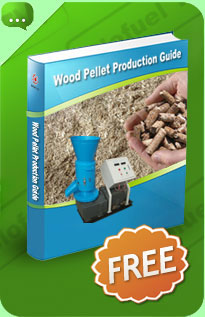Pellet Mill Die
The pellet mill die is the most important component of the process. The die effects pellet quality, productivity, energy consumption, production efficiency and reliability. The die is what forms the raw material into the pellet shape. The die contains a series of holes across its surface. As the material enters the pellet mill, it is compressed between the die surface and roller, with some material being compressed through the holes. The action of compression between roller and die, generates heat and pressure. These two forces are essential in the pellet formation process.
The size and diameter of the holes in the die vary on the market for the pellets. For example pellet stoves generally require a pellet with a diameter of 6mm, where pellet boilers can mostly handle 8mm in diameter, and in some cases even larger. Up to a certain point the diameter would change the description from a pellet to a briquette. It is harder however to design hopper and auger feed systems for briquettes. There is a lot more information on pellet mill dies within the guide, covering the materials used to produce them, surface finish, hole relief and counter relief and various other information and facts. See below for more information.
Ring Die Pellet Mills
There are two key types of pellet mill, the ring die and flat die pellet mill. The ring die pellet mill is a second generation design of pellet mill. Ring die pellet mills have been widely adopted in large scale animal feed and wood pellet production.
As the name suggests a ring die pellet mill has a ring shaped die. The die is driven and sits in a vertical position. The rollers provide force to the inner side of the die, compressing material and pellets to the outer edge of the ring. There are several advantages and disadvantages of ring die pellet mills over the flat die design, which are discussed in guide.
Flat Die Pellet Mills
The flat die pellet mill was the first design to be used. Originally used for animal feed production and later adapted to process other raw materials including wood pellets. Flat die pellet mills are a much simpler design than ring die pellet mills, and are popular as small scale pellet mills. In a flat die pellet mill the die is in a horizontal position, with a set of rollers providing vertical pressure, down onto the surface of the die. Depending on the design of the pellet mill, the die its self will be rotating or the roller carriage over the surface of a fixed die. Die and roller changes in flat die pellet mills are very easy.
Pellet Mill Production Guide
At Biofueltech we develop small mobile pellet mill solutions. We have developed this guide to provide more detail on the pellet production process for individuals and organizations interested in both small and large scale production. The guide contains information on the whole process from raw material reduction, to final processing, including detailed information on the pellet mill die.

